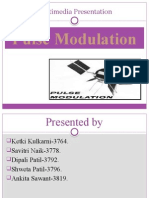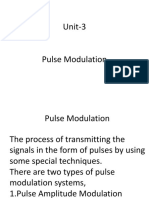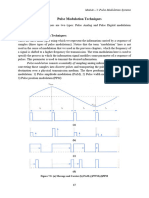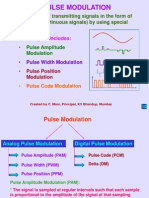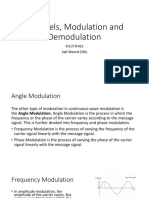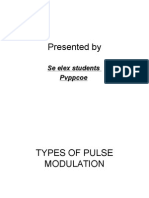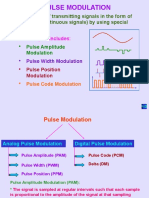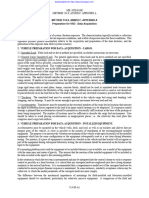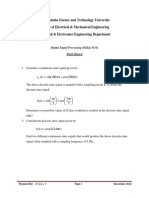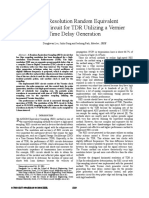0% found this document useful (0 votes)
20 views12 pagesPulse Codde Modulation
Pulse modulation is a technique where the amplitude, width, or position of a pulse is varied according to a baseband modulating signal, with types including Pulse Amplitude Modulation (PAM), Pulse Width Modulation (PWM), and Pulse Position Modulation (PPM). PAM involves varying the amplitude of high-frequency carrier pulses, while PWM and PPM adjust the pulse width and position, respectively. The document also discusses the generation and demodulation processes for these modulation techniques, emphasizing the sampling theorem and the use of circuits like sample and hold for PAM generation.
Uploaded by
Harshit SinghCopyright
© © All Rights Reserved
We take content rights seriously. If you suspect this is your content, claim it here.
Available Formats
Download as PDF, TXT or read online on Scribd
0% found this document useful (0 votes)
20 views12 pagesPulse Codde Modulation
Pulse modulation is a technique where the amplitude, width, or position of a pulse is varied according to a baseband modulating signal, with types including Pulse Amplitude Modulation (PAM), Pulse Width Modulation (PWM), and Pulse Position Modulation (PPM). PAM involves varying the amplitude of high-frequency carrier pulses, while PWM and PPM adjust the pulse width and position, respectively. The document also discusses the generation and demodulation processes for these modulation techniques, emphasizing the sampling theorem and the use of circuits like sample and hold for PAM generation.
Uploaded by
Harshit SinghCopyright
© © All Rights Reserved
We take content rights seriously. If you suspect this is your content, claim it here.
Available Formats
Download as PDF, TXT or read online on Scribd
/ 12








